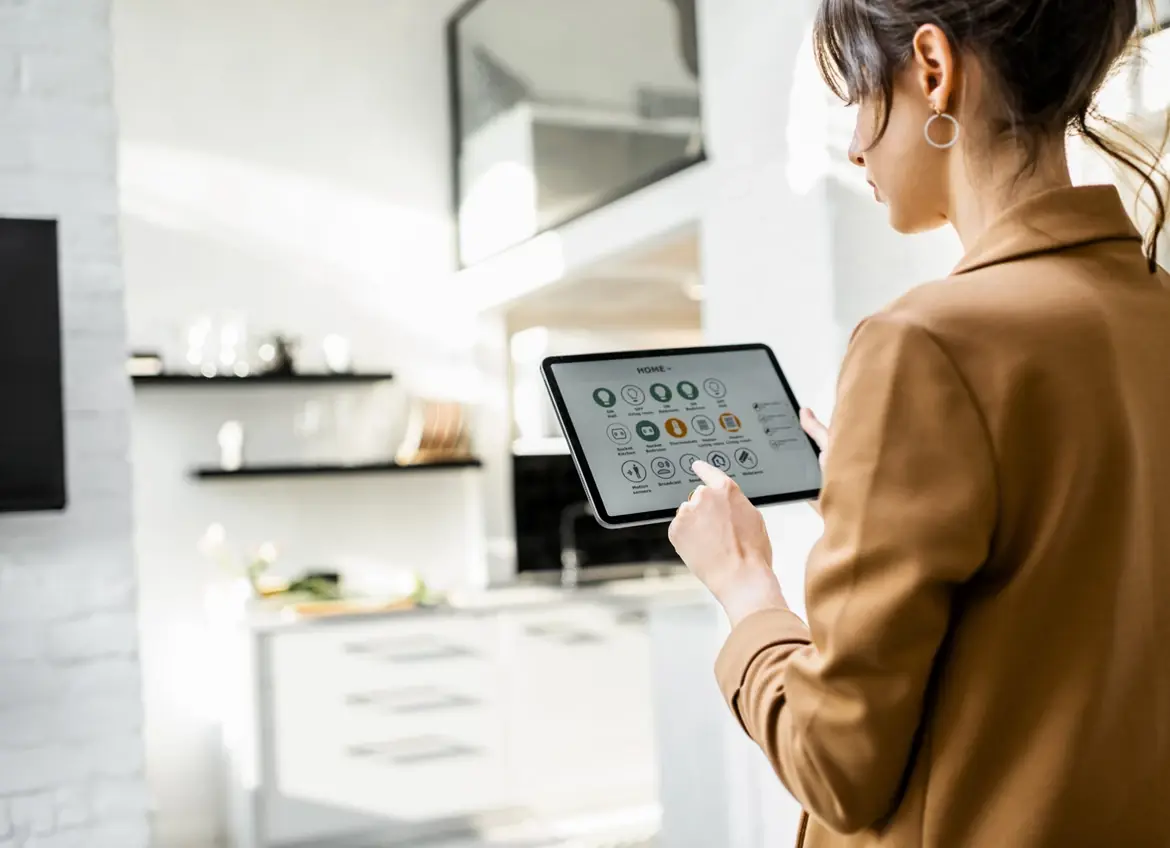
With the rapid technological advances of today, smart homes are growing in popularity and capabilities. If you’re unfamiliar with a smart home, the benefits, or how to get started, we’ll fill you in.
What is a smart home?
A smart home uses automation via a smartphone, tablet, computer, or voice command to control various devices and appliances throughout your home. Smart home systems are often used to control the thermostat, lights, locks, security cameras, sprinklers, and even appliances.
Benefits of having a smart home
- Convenience: Make your life more convenient by automating tasks that you would normally do manually, such as setting your thermostat to turn down when you leave the house or having lights turn on when you come home.
- Comfort: Make your home more comfortable by adjusting the temperature, lighting, and other settings to your liking. For example, create a relaxing scene in your living room by dimming the lights and turning on soft music.
- Security: Make your home more secure by monitoring for intruders and sending alerts to your smartphone if something is wrong. You can also use smart locks to lock your doors remotely, even if you're not home.
- Energy savings: Save energy by automatically turning off lights and appliances when they're not in use. You can also use smart thermostats to program your heating and cooling system(s) to be more efficient.
- Peace of mind: Smart homes can give you peace of mind by letting you know what's going on in your home—even when you're not there. Smart security cameras can be used to check on pets while you're away.
Setting up your smart home
Setting up a smart home system doesn’t have to be complicated. Here are some helpful tips on how to get started:
- Start by choosing a smart home system or “hub”. This is the device that will connect all your smart devices together. There are many different smart home hubs available, so take some time to research and find one that's right for you.
- Once you have a smart home hub, you can start adding smart devices. Some popular ones include smart thermostats, smart lights, smart locks, and smart speakers. Sticking with a specific system (or brand) for all of your devices ensures compatibility and can make it easier to integrate everything into your system.
- Once you set up your smart devices, you can start automating tasks.
The bottom line
Smart homes are becoming more and more popular—and for good reason. They offer a wide range of benefits, from convenience and comfort to security and energy savings. If you're thinking about getting started with a smart home, now is the time to do it. The technology is more affordable and accessible than ever before, and there are many great options available.
